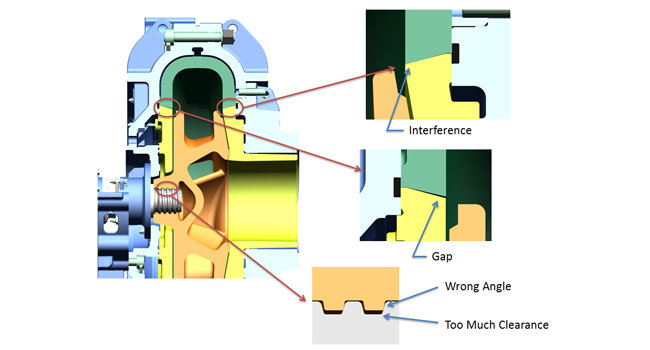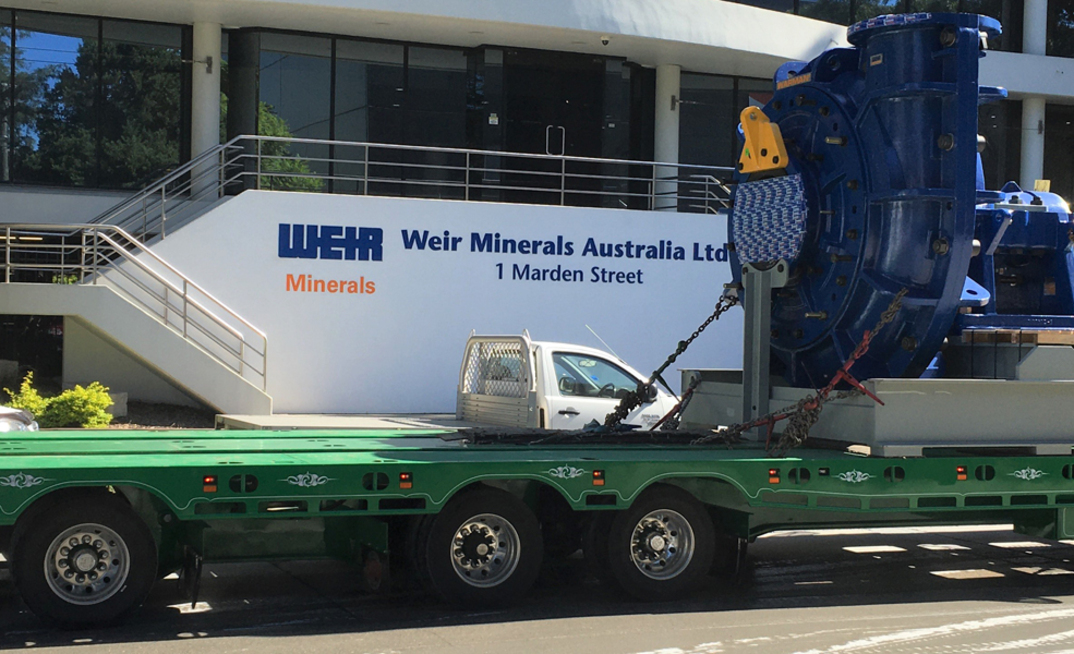At Weir Minerals, safety is always our highest priority. Risk is inherent in the mining industry, where heavy-duty machinery is pushed to its limit, but we strive to eliminate potential risks at every step of our equipment's lifespan to ensure everyone returns home safely to their significant others at the end of each day.
Non-OEM slurry pump spare parts undermine the safety of our equipment.
Lacking the reliable wear-resistant alloys we design into our pumps and our full design documentation, replicators' parts inherently introduce risks to the operation of the OEM pumps they're installed in.
Additionally, their manufacturers usually reduce costs by bypassing key safety steps in their manufacture, inspection and transportation, introducing a variety of entirely preventable risks to a mine and its employees.
Below are just three ways mines have encountered serious risks by using non-OEM pump components.
1. Inferior quality components can fail catastrophically
Warman® slurry pumps are designed, manufactured and installed to operate under demanding conditions that place every component in the pump under a significant amount of stress. Ensuring components meet such a challenge is an enormous task, requiring the highest-quality construction materials, lengthy and precise design processes, stringent quality control in manufacturing and extensive safety testing.
Without our industry-leading wear-resistant alloys, such as Ultrachrome® A05, replicator parts will not only achieve vastly inferior wear life, but they'll wear unpredictably in a way the pump wasn't designed to handle. This can damage other parts of the equipment and introduces risks for maintenance engineers who need to deal with unforeseen problems.

Fitting issues commonly encountered with replicated parts in Warman® slurry pumps.
Replicator manufacturers use 3D scanning to approximate their construction. While this gets the broad shape of a component right, it often fails to account for smaller design features essential to its safe operation and leads to a poor fitment within the pump. Even tiny gap or interference between components can lead to leakage, vibration or excessive stress concentration which causes dangerous and unpredictable cracks in components.
Voids, cracks and other structural flaws in casting are often difficult to detect prior to installation, especially without an experienced engineer on site to support it and pose a serious risk in the challenging environment of a high-performance slurry pump.
Failure of critical components can lead to high-pressure slurry spray, which is often toxic, corrosive or heated to very high temperatures. It can also cause high-energy brittle fracture projectiles which can travel dozens of metres. The risk of hitting other equipment or personnel is high in such situations.
To operate safely, rugged equipment needs safe and reliable components to be properly fitted, which replicator spares often aren't.
2. Replicator parts aren't compatible with Warman® lifting tools
Larger equipment, such as the Warman® MCR® 760 pump, have parts which can weigh up to 2000kg - leaving little room for error when manoeuvring them in the tight confines of a plant. Any accident or equipment failure during a part's transport poses an acute risk to equipment and personnel.
Warman® lifting tools and lifting methods are painstakingly designed and exhaustively tested to meet these challenges and cater to the different needs of each component in a pump.
One tool design concept utilises a fixed locking jaw mechanism which dramatically reduces the possibility of the component becoming detached, while another has a beam which allows combinations of components to be lifted while still attached to each other.
While these features enhance safety for users lifting Warman® genuine spare parts, they also mean that even slight design deviations in a replicator part introduce an unacceptable risk of that part slipping out from the tool unexpectedly.
Simply put, lifting replicated parts with Warman® lifting tools is unsafe. Non-genuine spares should only be lifted with tools supplied by the replicator.
3. Sub-standard transport equipment creates unloading risk
Unfortunately, there's a lot that can go wrong before equipment even gets to the mine - so safety must begin at the factory. Before any of the Warman® pumps or components are dispatched, a full risk assessment is conducted - identifying and addressing potential issues in loading, transportation and unloading.
Warman® pumps are secured with a custom-built cradle for lifting and transportation, tightly tied down to prevent movement during the trip and providing protection to equipment and personnel under poor road conditions, heavy braking, and while unloading.
Our shipping and handling practices receive the same careful risk assessment as our manufacturing processes, to ensure satisfactory tie down and lifting methods are available.
One method replicators use to reduce costs is to work under the assumption that nothing that can go wrong, will go wrong. Parts are frequently shipped on generic transport pallets which can't handle the component's weight, and break or move about mid-journey. This adds risk of component damage and personnel injury during transportation and at the point of unloading, when a broken pallet or inadequate tie-down chains could lead to an unstable load and toppling hazard.
Between their lack of design scrutiny and inferior construction processes, quality control, materials, transport controls and lifting tools, non-OEM components introduce serious risks to equipment and personnel.
Risks that are, in our eyes, hard to justify.
ABOUT THIS COMPANY
Weir
With world class engineering expertise, Weir works in partnership with our mining customers to solve their operating challenges safely, efficiently and sustainably.
CONTACT DETAILS:
- Website: http://www.global.weir/
- Email: https://www.global.weir/contact-us/

























